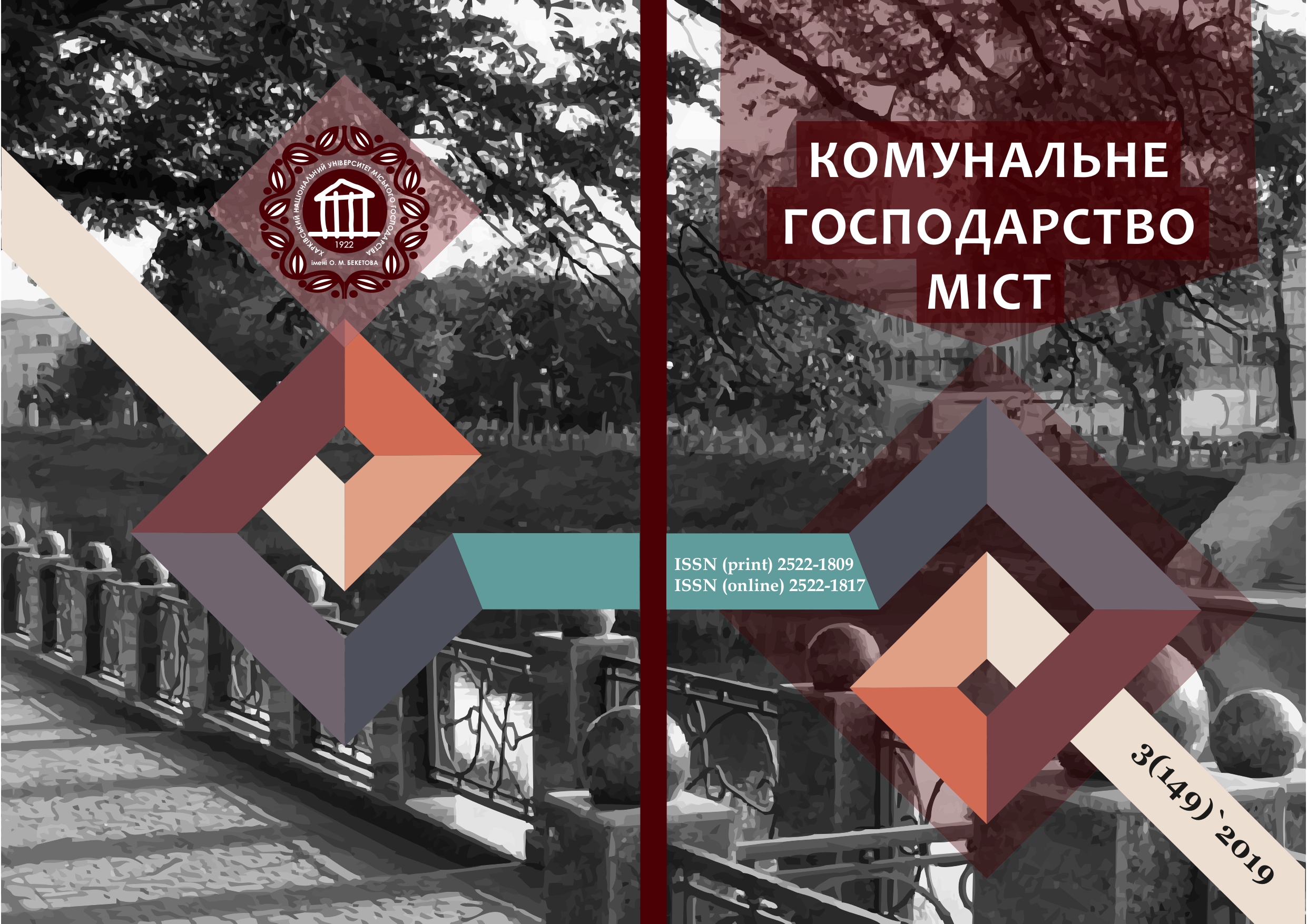ВПЛИВ ТЕПЛОІНЕРЦІЙНИХ ОСОБЛИВОСТЕЙ ОГОРОДЖЕНЬ НА УМОВИ КОМФОРТНОСТІ ПРИ ВПРОВАДЖЕННІ ЕНЕРГООЩАДНИХ РЕЖИМІВ ОПАЛЕННЯ В БУДІВЛЯХ
Array
Ключові слова:
енергопотреба, умови комфорту, радіаційна температура, переривчасте опалення.Анотація
Проаналізована зміна енергопотреби та показників теплового комфорту для репрезентативних приміщень з різним тепловим захистом, орієнтацією та за умови застосування енергоощадних режимів опалення. Встановлено, що провадження переривчастих режимів опалення призводить до зменшення споживання тепла до 13% для всього опалювального періоду. Для зимового періоду року економія становить (8…10) %, для періоду міжсезоння – до 25%. Представлена залежність між зміною індексу теплового комфорту та параметрів довкілля. Введення переривчастого режиму нагрівання не тільки знижує споживання тепла, але і знижує негативний PMV в середньому на 20%, але не виходячи з допустимого діапазону комфортних умов (-0,5 ... 0,5).
Посилання
DSTU B EN 15251: 2011. Rozrakhunkovi parametry mikroklimatu prymishchen dlia proektuvannia ta otsinky enerhetychnykh kharakterystyk budivel po vidnoshenniu do yakosti povitria, teplovoho komfortu, osvitlennia ta akustyky budivel. [Calculated parameters of the microclimate of premises for designing and estimation of energy characteristics of buildings in relation to air quality, heat comfort, lighting and acoustics of buildings]. Kyiv: Minrehion Ukrainy, 2012. 71. (ukr.)
DSTU B EN 15261: 2012, 2012, Rozrakhunok parametriv mikroklimatu. [Calculation of microclimate parameters]. Kyiv. Minrehion Ukrainy. 81. (ukr.)
.DSTU B EN ISO 7730: 2011. Erhonomika teplovoho seredovyshcha. Analitychne vyznachennia ta interpretatsiia teplovoho komfortu na osnovi rozrakhunkiv pokaznykiv PMV i PPD i kryteriiv lokalnoho teplovoho komfortu. [Ergonomics of the thermal environment. Analytical definition and interpre-tation of thermal comfort on the basis of calculations of PMV and PPD indices and criteria of local thermal comfort.].Kyiv: Minrehion Ukrainy, 2012. 74. (ukr).
Fanger, P. O. (1973). Assessment of man's thermal comfort in practice. British Journal of Industrial Medicine, 30, 313–324.
Prek, M., Butala, V. (2017). Principles Comparison between Fanger’s thermal comfort model and human exergy loss. Energy, 138, 228–237.
Humphreys, M., Nicol, F., Roaf, S. (2015). Adaptive Thermal Comfort, Foundations and Analysis, Routledge, Earthscan, London.
ASHRAE 554 2004. (2004). Thermal Environmental Conditions for Human Occupancy.
Haddad, S., Osmond, P., King, S. (2019). Application of adaptive thermal comfort methods for Iranian schoolchildren, Building Research and Information, 47, 2, 173-189.
Hom, B. Rijal, Michael, A. Humphreys, & J. Fergus, Nicol. (2017). Towards an adaptive model for thermal comfort in Japanese offices, Building Research & Information, 45,7, 717-729. doi: 10.1080/09613218.2017.1288450.
Song, Y., Sun, Y., Luo, S., Tian, Z., Hou, J., Kim, J., Dear, R. (2018). Residential adaptive comfort in a humid continental climate – Tianjin China, Energy and Buildings, 170, 115-121.
Prek, M, Butala, V. (2010). Principles of exergy analysis of human heat and mass exchange with the indoor environment, Int J Heat Mass Transf, 53, 25-26:5806-14.
Shukuya, M., Saito, M., Isawa, K., Iwamatsu, T., Asada, H. (2009). Human-body Exergy Balance and Thermal Comfort. Draft Report for IEA/ECBCS/Annex49.
Shukuya, M. (2013). Exergy: Theory and Applications in the Built Environment, Berlin, Springer, 374.
Shukuya, M. (2018). “Exergetic Aspect of Human Thermal Comfort and Adaptation." Sustainable Houses and Living in the Hot-Humid Climates of Asia, Springer, Singapore,.123-129.
Juusela, M. A., Shukuya, M. (2014). Human body exergy consumption and thermal comfort of an office worker in typical and extreme weather conditions in Finland, Energy and Buildings, 76, 249-257.
Schweiker, M., et al. (2017). Challenging the assumptions for thermal sensation scales, Building Research & Information, 45,5, 572-589.
Isawa, K. (2015). Human body exergy balance: numerical analysis of an indoor thermal environment of a passive wooden room in summer, Buildings, 5, 1055-1069.
Irina Bliuc, Laura Dumitrescu. (2007). Assessing thermal comfort of dwellings in summer using EnergyPlus. Proceedings of Clima WellBeing Indoors.
EnergyPlus Energy Simulation Software. Retrieved from http://apps1.eere.energy.gov/buil-dings/energyplus.
Deshko, V.I., Buyak, N.A., Sukhodub, I.O. (2018). Influence of Subjective and Objective Thermal Comfort Parameters on Building Primary Fuel Energy Consumption, International Journal of Engineering & Technology, 7 (4.3), 383-386.
International Weather for Energy Calculations. Retrieved from https://energyplus.net/weatherlocation/europe_wmo_ region_6/UKR//UKR_Kiev.333450_IWEC
Deshko, V.I., Buiak, N.A, Bilous, I.Y., Hurieiev, M.V. (2018). Assessment of the influence of vacuum replacement on energy consumption and conditions of comfort in building on the basis of dynamic modeling, Scientific journal "Energy: Economics, Technology, Ecology", 3, 52-62. (ukr.)
##submission.downloads##
Опубліковано
Як цитувати
Номер
Розділ
Ліцензія
Автори, які публікуються у цьому збірнику, погоджуються з наступними умовами:
- Автори залишають за собою право на авторство своєї роботи та передають журналу право першої публікації цієї роботи на умовах ліцензії CC BY-NC-ND 4.0 (із Зазначенням Авторства – Некомерційна – Без Похідних 4.0 Міжнародна), котра дозволяє іншим особам вільно розповсюджувати опубліковану роботу з обов'язковим посиланням на авторів оригінальної роботи та першу публікацію роботи у цьому журналі.
- Автори мають право укладати самостійні додаткові угоди щодо неексклюзивного розповсюдження роботи у тому вигляді, в якому вона була опублікована цим журналом (наприклад, розміщувати роботу в електронному сховищі установи або публікувати у складі монографії), за умови збереження посилання на першу публікацію роботи у цьому журналі.
- Політика журналу дозволяє і заохочує розміщення авторами в мережі Інтернет (наприклад, у сховищах установ або на особистих веб-сайтах) рукопису роботи, як до подання цього рукопису до редакції, так і під час його редакційного опрацювання, оскільки це сприяє виникненню продуктивної наукової дискусії та позитивно позначається на оперативності та динаміці цитування опублікованої роботи (див. The Effect of Open Access).

